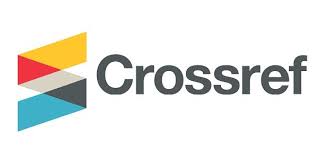IJCRR - 14(13), July, 2022
Pages: 52-59
Anti-diabetic Effect of Ethanolic Extracts of Cissus Quadrangularis linn Fruits and Michelia Champaea Leaves in Alloxan Induced Hyperglycaemic Rats and in 3T3L1 Cell Lines
Author: Jasti Deepthi, D. V. R. N Bhikshapathi, Palanati Mamatha, Puttaswamy Nirmala
Category: Healthcare
[Download PDF]
Abstract:
Background: Diabetes is a metabolic disorder that results in increased blood sugar. This study came up with a search for alternative medicines with no or fewer side effects for antidiabetic therapy. Materials and methods: The plants are extracted and screened for the phytochemical study of crude extracts. Anti-diabetic activity in alloxan-induced hyperglycaemic rats, in a single-dose study, multiple-dose treatment was investigated. In vitro cellular assay using 3T3L1 cell line was performed to check the cell viability with increasing plant extract treatment. Results: Phytochemical investigation reveals the presence of alkaloids, flavonoids, saponins, tannins, steroids, triterpenoids, carbohydrates, and glycosides in both plant extractions. In acute toxicity studies, no mortality was observed with either of the extracts even at a dosage of the level of 5000 mg per kg of body weight. The ethanolic extracts showed a noteworthy decline in blood glucose level in alloxan-induced rats in both single and multiple dosage methods. Significant changes were observed in the serum glucose and body weight from day 0 to day 14. The cell viability of the extracts was also comparable with the standard. Conclusion: Our results report that CQ fruits and MC leaves have potent antidiabetic action and on further studies, can be a credible resource in antidiabetic therapy.
Keywords: Cissus Quadrangularis Linn Fruits, Michelia Champaea Leaves, Anti-diabetic activity, 3T3L1 cell line, Cyototoxicity, Wistar rats.
Citation:
Jasti Deepthi, D. V. R. N Bhikshapathi, Palanati Mamatha, Puttaswamy Nirmala. Anti-diabetic Effect of Ethanolic Extracts of Cissus Quadrangularis linn Fruits and Michelia Champaea Leaves in Alloxan Induced Hyperglycaemic Rats and in 3T3L1 Cell Lines International Journal of Current Research and Review. 14(13), July, 52-59
References:
1. Barar FS. Essentials of pharmacotherapeutics. S. Chand Publishing; 2000.
2. Ahmed MF, Kazim SM, Ghori SS, Mehjabeen SS, Ahmed SR, Ali SM, Ibrahim M. Antidiabetic activity of Vinca rosea extracts in alloxan-induced diabetic rats. Int J Endocrinol 2010:841090.
3. Aiman R. Recent research in indigenous anti-diabetic medicinal plants, An overall assessment. Indian J Physiol Pharmacol 1970;14(2):65-76.
4. Dinesh P, Mohapatra TK. New oral hypoglycemic agents: merits and demerits. Ind J Clin Pract 1997;7:34-56.
5. Ratnakar P, Murthy PS. Preliminary studies on the antitubercular activity and the mechanism of action of the water extract of garlic (Allium sativum) and its two partially purified proteins (Garlic defensins?). Indian J Clin Biochem 1996;11(1):37-41.
6. Muhammad A, Sirat HM. COX-2 inhibitors from stem bark of Bauhinia rufescens Lam.(Fabaceae). EXCLI journal 2013;12:824.
7. Anushia C, Sampathkumar P, Ramkumar L. Antibacterial and antioxidant activities in Cassia auriculata. Glob J Pharmacol 2009;3(3):127-30.
8. Sutar NG, Sutar UN, Behera BC. Antidiabetic activity of the leaves of Mimosa pudica Linn. in albino rats. J of Herb Medi and Toxi 2009;3(1):123-6.
9. Bussa SK, Jyothi P. Antidiabetic activity of stem bark of Neolamarckia cadamba in alloxan-induced diabetic rats. IJPT 2010;2(2):314-24.
10. Chaudhuri RK, Mukherjee M, Sengupta D. Limitation of glucose oxidase method of glucose estimation in jaundiced neo�nates.Indian J Exp Biol 2006;44(3):254-55.
11. Babu V, Gangadevi T, Subramoniam A. Anti-hyperglycemic activity of Cassia kleinii leaf extract in glucose fed normal rats and alloxan-induced diabetic rats. Indian J Pharmacol 2002;34(6):409-15.
12. Ahmed SM, Swamy V, Gopkumar P, Dhanapal R. Anti-diabetic activity of Terminalia catappa Linn. leaf extracts in alloxan-induced diabetic rats. IJPT 2005;4(1):36-0.
13. Skehan P, Storeng R, Scudiero D, Monks A, McMahon J, Vistica D, Warren JT, Bokesch H, Kenney S, Boyd MR. New colorimetric cytotoxicity assay for anticancer-drug screening. JNCI 1990;82(13):1107-12.
14. Patel S, Gheewala N, Suthar A, Shah A. In-vitro cytotoxicity activity of Solanum nigrum extract against Hela cell line and Vero cell line. Int J Pharm Pharm Sci 2009;1(1):38-46.
15. Tiwari BK, Pandey KB, Abidi AB, Rizvi SI. Therapeutic potential of Indian medicinal plants in diabetic condition. Ann Phytomed 2013;2:37-43.
16. Rana CS, Ballabha R, Tiwari JK, Dangwal LR. An ethnobotanical study of the plant resources in the Nanda Devi Biosphere Reserve (a world heritage site), Uttarakhand, India. J Ethnobio Trad Med 2013;120:591-601.
17. Rana CS, Tiwari JK, Dangwal LR, Gairola S. Faith herbal healer knowledge document of Nanda Devi Biosphere Reserve, UttaraKhand, India. IJTK 2013;12(2):308-14.
18. Poretsky L. Principles of diabetes mellitus. Springer Science & Business Media; 2010.
19. Scott LJ, Spencer CM. Miglitol: A review of its therapeutic potential in type 2 diabetes. Drugs 2000;59(3):521-49. 20. Zaid H, Antonescu CN, Randhawa VK, Klip A. Insulin action on glucose transporters through molecular switches, tracks and tethers. Biochemical Journal 2008;413(2):201-15.
|






 This work is licensed under a Creative Commons Attribution-NonCommercial 4.0 International License
This work is licensed under a Creative Commons Attribution-NonCommercial 4.0 International License